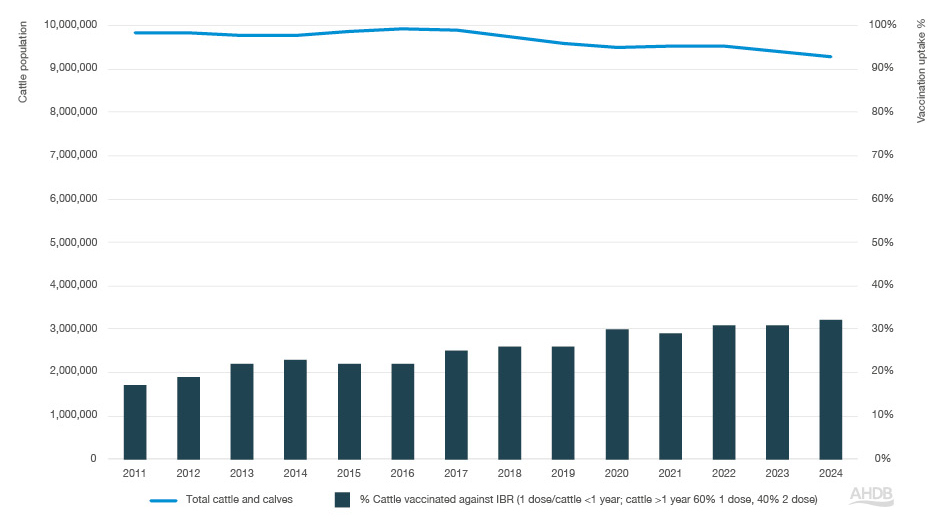- Home
- Knowledge library
- Infectious Bovine Rhinotracheitis (IBR) vaccines in cattle
Infectious Bovine Rhinotracheitis (IBR) vaccines in cattle
Infectious Bovine Rhinotracheitis (IBR) is a disease of cattle caused by infection with Bovine herpesvirus type 1.
IBR causes severe respiratory disease that can lead to fatal pneumonia.
In adult cows, infection is associated with a severe and prolonged drop in milk yield, reduced fertility and abortions, and inflammation of the vulva/prepuce.
Seven vaccines for IBR have been marketed in the UK:
- Bovilis® IBR marker live contains modified live gE-negative Bovine herpesvirus type 1 (BHV-1)
- Bovilis® IBR Marker Inac contains inactivated gE-negative BHV-1
- Hiprabovis IBR Marker Live contains modified live gE-negative BHV-1 contains inactivated gE-negative BHV-1
- Rispoval IBR-Marker Inactivated contains inactivated gE-negative BHV-1
- Rispoval IBR-Marker Live contains modified live gE-negative BHV-1
- Tracherine contained modified live BHV-1
- Rhinovac IBR Marker Live contains modified live gE-negative BHV-1
In addition, inactivated BHV-1 virus is also a component of two vaccines that target pneumonia:
- Imuresp RP (no longer on the market)
- Rispoval 4
These are targeted mainly at stock under one year of age.
These combination vaccines have not been included in the estimate of uptake of IBR vaccines but are included in the uptake targeted at calf pneumonia.
Assumptions
Numerator
The number of doses of vaccine administered has been calculated by multiplying the number of packs sold by the number of doses per pack.
Denominator
It was assumed that cattle of all ages should be vaccinated and that the at-risk population was all cattle and calves in the UK.
All cattle are potentially at risk of IBR.
The denominator was calculated on the assumption that all cattle before the age of one year received one dose of the IBR vaccine, and 40% of cattle over one year of age received two boosters annually, while 60% received one IBR booster vaccine per year.
To take this into account, the denominator was, therefore, the number of calves under one year plus the number of cattle over one year multiplied by 1.4.
Vaccination uptake
Since 2017, it has been estimated that more than one in four of all cattle in the UK are being vaccinated against IBR.
IBR vaccine uptake steadily increased from 17% in 2011 to 32% in 2024.
Figure 1. Percentage of cattle vaccinated against IBR


